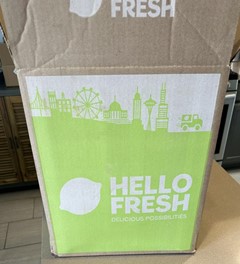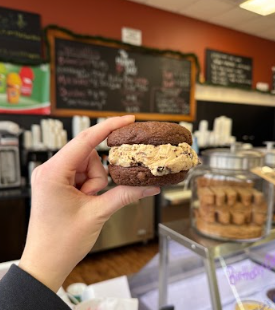
Fast food consumption has become a major problem in the United States of America. Grocery Stores are supposed to provide people with healthy food for a reasonable price, but it has become questionable whether or not the prices are still reasonable for the average person. It is becoming more and more difficult for families to eat healthy food due to the inflation of grocery prices. Within the last year, the price of uncooked meat has gone up an average of 11.2%, and most beverages have gone up around 19.1%. Lots of people turn to fast food as an easy solution.
A counter someone could make to the fast food issue is that the average person probably doesn’t eat fast food for every meal and might only go every once in a while. While people might not eat fast food for every meal, frozen meals are an extremely common choice for people, especially people with families. Frozen premade meals are some of the most popular items in grocery stores. Frozen meals may seem healthier than fast food, but most of those meals are not. How do frozen chicken nuggets compare to the ones served at McDonald’s? One McDonald’s chicken nugget is 48 calories. A frozen Purdue chicken nugget is 42 calories, which is only six less than a McDonald’s nugget. A frozen Tyson chicken nugget is 54 calories, and that is actually six more calories than a McDonald’s nugget. The average item in the frozen aisle of a grocery store is $4.91, and the average bag of chicken nuggets is $6.96. These prices are very similar to a McDonald’s 20-piece chicken nugget meal for $5.00. The food at the grocery store that is most similar to fast food calorie-wise is also very similarly priced. So, while someone might not eat fast food every day, it is still very possible that due to grocery inflation, they still eat food that has the same effect as fast food. Some Dunkin Donuts and Starbucks drinks also have calorie counts that are similar to an entire fast food meal.
It could also be argued that a lot of people don’t have to provide for an entire family when they get food. However, lots of people who don’t need to provide for a family still turn to fast food. A single person lives off of their income, and due to grocery prices, it might be even more difficult for them to afford grocery essentials like dairy and produce. It is something that younger people have to deal with at the same time they are struggling with things like paying off college or affording a house. Tori Kemmerling is a high school senior who is getting ready to go to college and start her own life. Due to current grocery prices, Kemmerling doesn’t believe she would be able to provide healthy food for herself or a potential family one day unless she got a “really, really good job.” She said that food prices already stress her out, and specifically said that fruit was overly expensive. Despite knowing it might not be great for them, many teenagers and young adults today think fast food usually seems like an easy alternative. Kemmerling has the McDonald’s and Wawa apps on her phone because she thinks they’re useful regularly.
Fast food is not a bad thing, and it is perfectly fine to have it on occasion as a special treat or when in a rush, but the excessive amount that people have is the issue. Too much fast food can not only lead to weight gain but it can also lead to depression, loss of muscle, and surges in cholesterol. The amount of trans fat can also cause heart disease and type 2 diabetes. In a 2022 survey of one thousand American adults, 65% of them said that the cost of healthier food prevented them from purchasing it. Stacey and Matthew Versepy are a working-class couple who have three kids. Matthew stated that he spends about double the amount of money on groceries than he did five years ago. He now has to split up his once-weekly shopping trip into multiple smaller trips to plan how to spend the money. The stuff he purchases at the grocery store is “significantly healthier” than the options at fast food chains. He also said, “I definitely buy less nonessential food now”. On a scale of one to ten with ten being a huge problem Stacey believes that “fast food consumption and grocery prices are both 10/10 problems for America.” The lower and middle-class citizens in the United States are clearly suffering due to grocery prices which then causes them to suffer from the affects of fast food.
There is no simple solution to the inflation crisis this country is in but there are options for cheaper and healthier food. There are lots of meal kit services that will send healthy meals right to people’s doorsteps. Hello Fresh is one of these services that offers fresh meals for $9.99 each. Another option is Blue Apron which offers $8 meals, and Everyplate has meals for $4.99. These meal kits prioritize things like protein and vegetables. They are also just as quick if not quicker than most frozen meals when it comes to how long they take to make. They are cheaper than grocery store alternatives and are around the same price as average fast food meals. High school health programs could also teach more about alternative options for healthy food. Getting these meals and planning out grocery trips in advance could be beneficial for American citizens.
Sources:
https://bubbafoods.com/blog/nutritional-benefits-of-turkey-bubba-burgers-and-beef-bubba-burgers/
https://www.mcdonalds.com/us/en-us/product/cheeseburger.html
https://school.eb.com/levels/high/article/cultural-globalization/344667#225002.toc
https://www.nerdwallet.com/article/finance/price-of-food




